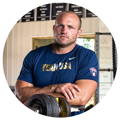The Ultimate Guide to Big Calves
Big Calves: Why They Matter and How to Grow Them
If you’ve ever heard of mirror muscles, then you know these are ones that are all show and no go. Typically, big biceps and washboard abs are two that come to mind and steal the spotlight. But well-defined calves might be considered in the same family. Something the “never skip the leg day” lifters or the ones who try to stave off the “chicken legs” title people understand is this: the calf muscle is actually one that both shows and goes. Not only are well developed calves helpful for enhancing overall physique, but they also have a part in boosting athletic performance and functional strength. With the right knowledge and training approach, anyone can turn those potentially underwhelming calves into powerhouses of strength and style.

Table of Contents

Calf Anatomy
When referring to the calf, we often look to the lower leg. But the calf muscle is actually composed of two smaller muscles, the gastrocnemius and the soleus. The gastrocnemius is the larger of the two muscles. This is the muscle that can be seen when looking at the lower leg. The soleus muscle is underneath the gastroc. These two muscles together are responsible for helping you walk, run, flex your feet, stand on your toes and even for stability. One fun fact, or not so fun depending on which side of the coin you find yourself on, is that calf size and their willingness to grow can be impacted by genetics. While we are going to unpack some best exercises to grow your calves it's worth remembering that, to some extent, you can blame your parents for the growth or lack of growth that occurs in your own calves.
Calves in Sport, Aesthetics and Health
Calves play a key role in each performance, a desirable physique and even have health benefits. It’s safe to say that most of the time big calves are also strong calves.
Strong calves contribute to ankle stability, reduce injury risk, and improve overall mobility. These are key components in health not just for daily living but especially when it comes to sports performance.
Having big calves helps add to a desirable physique. Oftentimes when talking body building or simply looking to have a proportionate or symmetrical look, big calves can help round out the “x” shape that people often strive for. A muscular upper body paired with thin calves can make your physique look disproportionate. Strong calves help make sure the look of your legs matches the rest of your build and an overall balanced look. The saying “don't skip leg day” is not only in regard to growing quads, hamstrings and glutes, but also refers to the calves.
When it comes to sports performance, we already know calves have a role in running, jumping, and even stabilization in the bigger lifts. But it's important to know how big of an impact calves have on these things. Calves generate explosive power for sprints and play a critical role in maintaining speed and even endurance during long-distance runs. When considering long distance running, strong calves are necessary to help avoid fatigue during long efforts where the calves are relied on for the constant pushing off the ground in running.
Calves support balance and stability during heavy lifts like squats, deadlifts, and clean and jerks. They act as anchors, keeping the body grounded while handling massive loads. Olympic lifters and even some jumpers may be familiar with the saying “Triple extension.” Execution to reach full extension wouldn't be possible if it weren't for the calves. Big calves play a major role in weightlifting.
Any sport that relies on a vertical leap or jumping is also very dependent on strong calves. Basketball, volleyball, and gymnastics athletes, for example, with powerful calves can jump higher and land more safely, giving them a greater competitive edge.
Training Calves
When chasing big calves, sure, the exercise selection is important but there are a few other factors at play when training such a small muscle. Let's unpack both some tips in training and a few exercises to consider incorporating in your next calf day.
Training tips
While the exercises you choose for calves are important, and more on that in a minute, it's also important to talk about how you train to get big(er) calves. Progressive overload is a must. Simply finishing your leg day with a few weighted calf raises and expecting results won’t work. Making sure you are focusing on progressively adding reps, sets, weight or intensity (which can be found through something like adding tempo to your reps) is important. This is necessary to stimulate growth.
Depending on training age and how often you train in general, calves will often be trained 2-4 times per week. Calves are a muscle unlike most where they are used in most anything you do. If you think about it, walking, going up stairs, and even just standing, your calves are working. This makes them super resistant to fatigue because of how often they are used, and this sometimes makes the training requirements higher in order to see change. It's also important to mention that in order for calves to grow, you need to make sure muscle adaptation does not occur and you hang out there too long. Stalled progress is the worst so while you do want to ensure you are seeing progressive overload in your programming you may also find that higher intensity, volume, or frequency is necessary to stimulate growth. If you want help unpacking programming or to make sure you are taking the right approach, visit our peak strength app for programming that takes the guesswork out of it for you.
Calves also often have the ability to recover quickly. This is why training frequency can often be higher than other muscles like, say quads or glutes.
Skipping on mobility and stretching of the calves is ultimately leaving out a big piece of this calf growth puzzle. When you add stretching and mobility into your training protocol, this opens up the fascia and allows for blood flow to get to sore muscles. If you want to aid in recovery, blood flow is your friend.
One not so common recommendation when it comes to getting stubborn calves to grow is to train calves in the beginning of a training session. Rather than waiting to train the calves until the end of the training session, moving them to one of the first exercises can help prevent fatigue from setting in too soon and being unable to reach the preferred intensity in training these small and sometimes stubborn muscles.
Training Exercises
Since the calf is actually 2 different muscles, training in a way that targets both muscles at once and even prioritizes emphasis on one of the two at a time is a great way to train to get big(er) calves.
Something as basic as a standing calf raise is a great way to target the gastrocnemius. Shooting for 3-4 sets of 12-15 reps with heavy weight for stimulating growth. For a bigger emphasis on the soleus, taking the calf raise into a seated position for 4 sets of 15-20 reps is most effective.
To train the entire calf in an effective way, focusing on exercises like farmers walks with toe walking or plyometrics and jumps help develop endurance, strength, stability and power in the calves.
Plyometrics in general help with endurance and strength but taking the plyometrics up a notch and incorporating jumping rope can be a great tool for the calf growing arsenal. Using jumping rope as a finisher and a way to add volume to your training, this exercise will also help improve calf muscle endurance.
Common Mistakes
Just as it is important to train calves in a smart, somewhat methodical manner to see the growth you are hoping for, there are a few things that are equally as important to avoid doing when training calves.
Lacking variety will be the killer of gains. Constantly doing standing calf raises, even if you are playing with the sets, tempo and reps, won't cut it. Remember, there is a difference in variety vs random. You don't want to do random exercises, rather you want variety. A well written program will have you doing just that. Progressive overload and changing the exercise selection when appropriate can help avoid stagnation due to a lack of variety.
Training a full range of motion is important. Since the calf is not a very big muscle, training should go through the full stretch and contraction of the muscle for optimal growth. Many people don't fully extend and contract their calves, limiting their potential growth.
Like anything in sport, physique and health, the need for consistency is imperative. Leaning on random calf exercises on occasion won't do the trick. Sporadic training of the calves will lead to poor progress, or no progress. And in order for those calves to grow, you need to treat them just like any other muscle group and train them consistently.
Recovery and Expectations
Recovery
While it is true that the calves are a frequently used muscle, it is also true that they do need adequate time to recover between sessions. Prioritizing recovery is important not only from a rest day standpoint but also dialing in all other things that ultimately impact your calves growing.
Making sure you are eating like the athlete you are training as. No under eating, especially on protein, allowed. Focus on not only fueling your workouts but adding in the mindset of also fueling your recovery.
Getting adequate sleep is a magic pill that some athletes overlook. Sleep is where your body does most of its recovering from going hard in the gym. Not just from a hormonal perspective, but physically, sleep allows your body to reap the rewards of the effort in the gym. Prioritize sleep.
Staying well hydrated can help sore muscles heal quicker. Water helps with blood circulation and this allows the proper nutrients to get to the muscles that need repairing. Staying properly hydrated also helps flush out any inflammation that might be present, which ultimately helps with recovery as well.
Expectations
Just with any goal, it's important to be realistic with the expectations you have. Since you know that genetics can play a role in calf growth, making sure to measure your progress and success on your own starting point is important. Looking at others who may be doing similar training to you and asking “but their calves are growing at such a faster rate” isn't a fair measure for yourself. Make sure you know your starting point with not only calf size but ability. By knowing your own unique start point you will be able to measure your own progress in a realistic manner.


The Bottom Line
At the end of the day, you want big calves. Growing them isn’t rocket science but it does take a bit of intentional planning along with execution. And maybe a touch of thanking (or being disgruntled with) your parents, thanks mom and dad, for your ability to grow tree trunk calves or not. If you want to be quicker, more powerful, sturdier and even have a more proportioned and balanced physique, training your calves appropriately can potentially set you apart from the rest.


Gaylemarie Kayes
Gaylemarie, but just call her GM, is a seasoned fitness and nutrition professional with nearly two decades of experience in the industry. With a diverse clientele ranging from ultra runners to high-level competitors, gm brings a wealth of knowledge and expertise. As a former high-level athlete in running, CrossFit and Olympic lifting to now, a busy yet active mother, she understands the challenges of balancing fitness and goal getting with a hectic lifestyle. Gm's approach emphasizes discipline, ownership, and hard work, tailored to honor each individual's life season for optimal health and well-being.
Blog Topics

Yo, It's Dane
Welcome to the Garage Strength Blog, where it is my goal to provide you with the experience and knowledge I've gained in the strength and conditioning world over many years of learning from both successes and failures. I train elite-level athletes in a multitude of sports from the high school to professional levels, already producing 5 Olympics and 30+ National Champions. If you want to be the next champion I train, check out my strength programs below!
Start Training With Me

Join for free educational videos EVERY WEEK on strength coaching and athletic performance
DANE MILLER
Dane Miller is the owner and founder of Garage Strength Sports Performance. He works with a select handful of clients on building comprehensive programs for fitness and nutrition. Several times a year he leads a workshop for coaches, trainers, and fitness enthusiasts.

